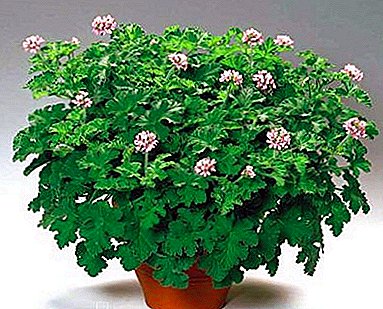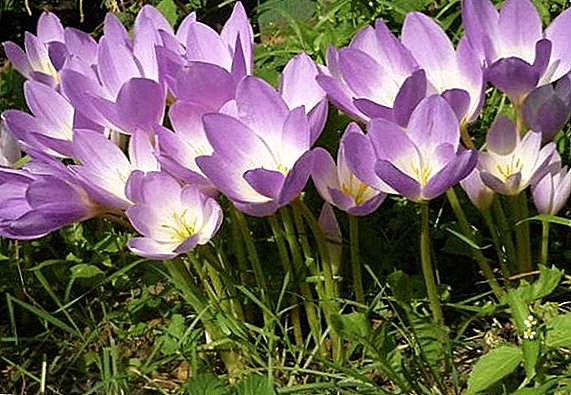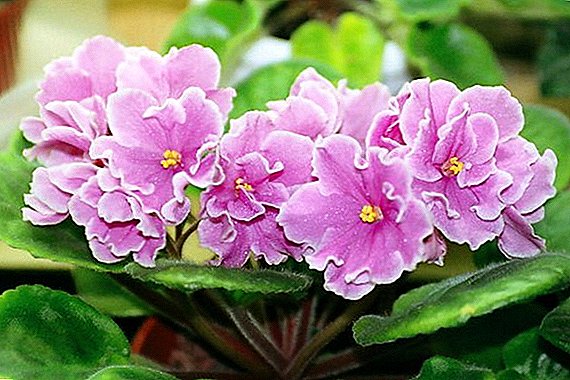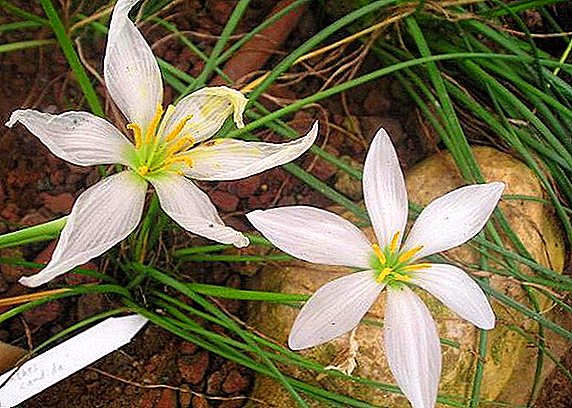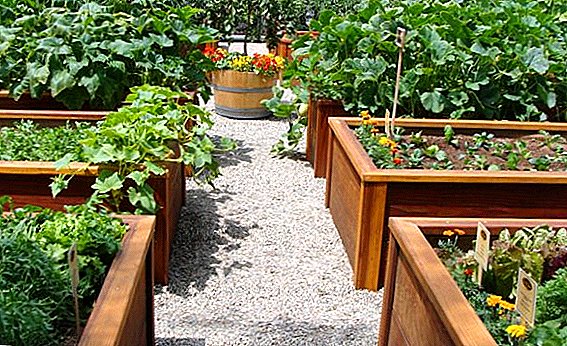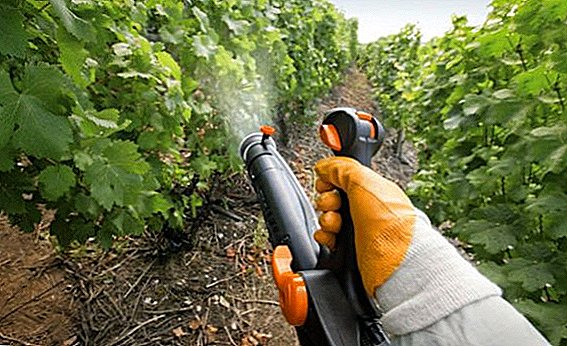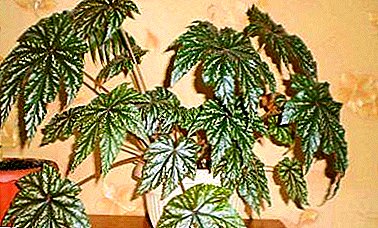
Begonia is a plant from the Begonia family. In culture, they are known for a very long time. The name of the species was in honor of its discoverer Michel Begon.
The Begonia Griffin is a hybrid of the Royal Begonia. The flower is grown as a houseplant, and in the summer period is used as a container culture in the garden.
Unlike the "parent", the begonia griffin is less demanding on humidity. The article will look at how to properly care for this plant. And also learn about the methods of reproduction and the rules of landing.
Botanical description and history
Compared to Royal, The begonia Griffin is characterized by larger leaves that resemble the griffin's paw in shape.. Plant height reaches 40 cm. Sheet-like plates of dissected type with an unusual black and green shade and silver pattern.
Royal Begonia was first discovered at auction in 1856. In 1959, the first three hybrids were bred. Since then, work has been actively conducted on the cultivation of new varieties of culture. For crossbreeding used begonia of different types:
- Chinese
- Yellow.
- Powerful.
In the entire history of the royal begonia breeding, a wide variety of varieties have been crossed, differing in leaf shape and color. The last of the hybrids is the begonia Griffin. The culture is less capricious, so it is grown at home as a perennial, as an annual - in the garden.
Appearance and features
Large lush leaves of the Griffin have a special beauty - in shape resemble palm trees. This durable and sturdy decorative flower attracts attention for breeding in pots. The hybrid is a bushy herb with a creeping thick stem and leaves with pronounced carved edges.
Features of the begonia griffin:
- Suitable for placing in a winter garden to give an accent.
- Ideal for creating flower arrangements in combination with begonias of other varieties.
- Throughout the year, has a decorative appearance.
- In open ground unpretentious to weather conditions.
A photo
You will see a photo of a plant:





Landing
In pots
Griffins love diffused light. They need to be protected from direct sunlight, so that the leaves do not get burned. The windows are blacked out with tulle curtains.
Planting material purchased in the winter and stored until spring in a cold place. Planting period - from March to May. For planting culture using a substrate for indoor plants. You can prepare the soil composition on your own. To do this, mix in one part:
- River sand.
- Peat
- Leafy land.
- Turf
Important! Acidic soil is not acceptable for begonias. The land should be light, fertile, with good breathability.
For planting Griffin, you can use ceramic, plastic and any other pot. Dishes should not be very deep and spacious in width. To excess moisture flowed into the pan, drainage holes are made at the bottom of the pot and on the sides.
Hybrids of royal begonias are planted either by seed or tubers. The latter option is preferable.
Planting technology:
- The bottom of the pot is drained: lay expanded clay, pebbles.
- River sand is poured over the drainage.
- Add the substrate.
- Moisturize the soil and plant a flower.
Fully plant do not fall asleep. So that the root neck does not rot, it is left on the surface. After two weeks, the tubers will sprout, they are covered with earth. A pot with a flower put in a well-lit place.
In the garden
 Royal begonias and their hybrids are rarely grown in open ground because they are unstable to bright light. But some flower growers planted in the garden and this type of begonias. Plants are placed in open ground when stable, warm weather is established - in late May or early June.
Royal begonias and their hybrids are rarely grown in open ground because they are unstable to bright light. But some flower growers planted in the garden and this type of begonias. Plants are placed in open ground when stable, warm weather is established - in late May or early June.
Choose a light, but well shaded area, so that the tender leaves do not get sunburn. Plant culture in soil with neutral acidity. The ideal substrate is a mixture of humus, leaf and sod land with the addition of coniferous soil and river sand.
Home Care Rules
Location and lighting
Begonias Griffin is better not to put on the window sills. The most favorable places for placing pots are shelves, tables, located opposite the light source.
Important! In tropical conditions, begonias grow in places where the sun is constantly at its zenith, and therefore they cannot turn to the light. It is not recommended to move containers with flowers from one place to another.
Temperature and humidity
The optimum temperature for griffin content is from 18 to 25 degrees Celsius. In winter, the temperature is lowered to + 16-18 degrees. Begonia does not tolerate drafts and cold snaps - it stops developing at + 10-13 degrees. In winter, the culture has a period of calm until spring.
Humidity is important, especially in hot weather. With optimal humidity - 50-60%, the flower will feel comfortable at + 30 degrees. To increase the humidity take a number of measures:
- Enjoy a humidifier.
- Irrigate the air with a fine spray spray around the flower (not on the leaves).
- In summertime, they put pots under pallets, on the bottom of which they put wet pebbles or a rag. It is periodically moistened with water.
Begonia Griffon due to succulent and large leaves evaporates much more moisture than it compensates for the rhizome.
Watering mode
In summer, the culture is plentiful, as hybrids of the Royal begonias do not tolerate dry soil in the heat. Moistening is carried out regularly - 3-4 times a week as the upper soil layer dries. Closer to winter, irrigation is reduced.
When watering should not be allowed to get moisture on the leaves.
It is not recommended to moisten the begonias with cold tap water. It should be soft and slightly warm. Water is pre-filtered or boiled. Because of the large sheet plates, the Griffon collects a lot of dust. It is necessary to monitor the cleanliness of the plant and wipe the leaves every 2-3 weeks with a dry cloth.
Top dressing
Fertilize begonias regularly - at least 1 time per month. Suitable mineral complex fertilizers, organic. Before feeding the plants must be watered. In winter, fertilizers are not added - the flower is preparing for the rest period.
Transfer
An important rule in the care of hybrids of the Royal begonias is an annual transplant. The culture is transplanted in the spring into a wide vessel, 3-4 cm wider than the former pot. For transplanting prepare new soil composition.
Diseases and pests
 Due to improper care, begonia can get sick. Common diseases are:
Due to improper care, begonia can get sick. Common diseases are:
- Mealy dew due to high humidity. Treatment - treatment with Topaz fungicide.
- Root rot due to excessive watering.
- Leaves thinning due to lack of light.
- Brown spots due to burns from the direct flow of the sun.
Leaves and stem may be affected by gray mold. For treatment use the drug Fundazol or Bordeaux mixture solution.
When the plant is weakened, pests can appear: spider mite, aphid, shieldweed. The infected flower should be isolated from the rest and sprayed with a solution of water and laundry soap. In neglected diseases, insecticides are used — for example, Fitoverm, Karbofos.
Breeding features
The Grigon begonia is propagated in several ways: root division, vegetative and seed. Root division:
- During the transplant, some of the roots are separated.
- Place the cuts sprinkled with charcoal.
- Place the rhizome in the finished substrate.
- Water and wait for germination.
When propagating by cuttings, they are taken from the leaves or from the stems. Put in the water before the roots and planted in the ground. Begonia can be propagated and parts of the leaves, cut into small triangles.
The cut parts of the leaves tightly pressed to the ground and covered with a film. It needs to be lifted daily, so that the leaves do not rot. In two weeks, new shoots will appear. Plants are transplanted into a separate container when they are strong enough.
Planting seeds:
- Seeds are treated with potassium permanganate for 30-40 minutes.
- Washed and planted on a wet peat tablet on a pallet.
- Planting material is covered with glass or polyethylene.
Water is added to the sump to keep the peat moist. The temperature in the room is maintained in the mode of + 20-22 degrees. After 2-3 weeks, shoots will appear.
Growing at home Griffin - a hybrid of the Royal Begonia does not present much difficulty. It is important for the plant to provide diffused illumination and to protect it from direct ultraviolet rays. Water as the soil dries out, do not over-wet. Replace the flower annually in another container with a fresh substrate.


